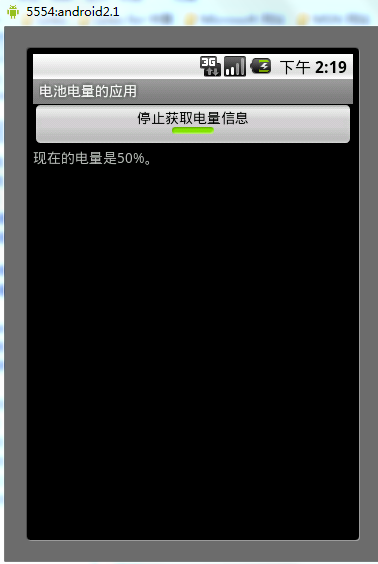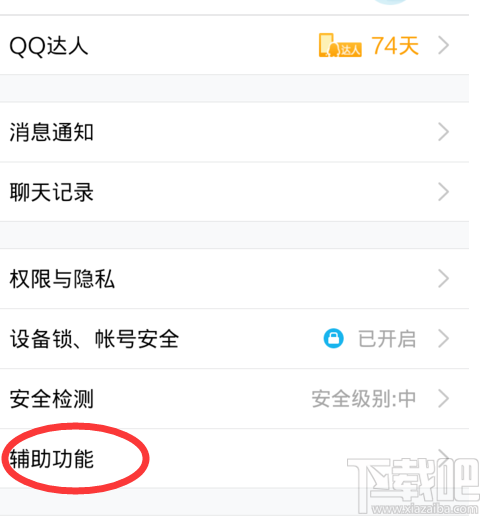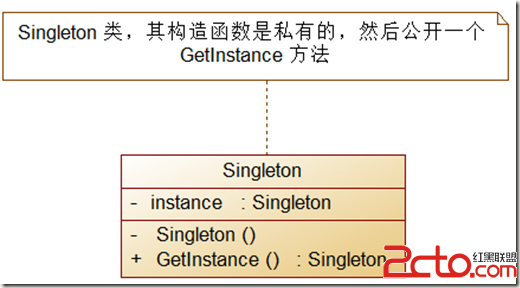編輯:關於Android編程
本文實例講述了Android使用post方式上傳圖片到服務器的方法。分享給大家供大家參考,具體如下:
/**
* 上傳文件到服務器類
*
* @author tom
*/
public class UploadUtil {
private static final String TAG = "uploadFile";
private static final int TIME_OUT = 10 * 1000; // 超時時間
private static final String CHARSET = "utf-8"; // 設置編碼
/**
* Android上傳文件到服務端
*
* @param file 需要上傳的文件
* @param RequestURL 請求的rul
* @return 返回響應的內容
*/
public static String uploadFile(File file, String RequestURL) {
String result = null;
String BOUNDARY = UUID.randomUUID().toString(); // 邊界標識 隨機生成
String PREFIX = "--", LINE_END = "\r\n";
String CONTENT_TYPE = "multipart/form-data"; // 內容類型
try {
URL url = new URL(RequestURL);
HttpURLConnection conn = (HttpURLConnection) url.openConnection();
conn.setReadTimeout(TIME_OUT);
conn.setConnectTimeout(TIME_OUT);
conn.setDoInput(true); // 允許輸入流
conn.setDoOutput(true); // 允許輸出流
conn.setUseCaches(false); // 不允許使用緩存
conn.setRequestMethod("POST"); // 請求方式
conn.setRequestProperty("Charset", CHARSET); // 設置編碼
conn.setRequestProperty("connection", "keep-alive");
conn.setRequestProperty("Content-Type", CONTENT_TYPE + ";boundary=" + BOUNDARY);
if (file != null) {
/**
* 當文件不為空,把文件包裝並且上傳
*/
DataOutputStream dos = new DataOutputStream(conn.getOutputStream());
StringBuffer sb = new StringBuffer();
sb.append(PREFIX);
sb.append(BOUNDARY);
sb.append(LINE_END);
/**
* 這裡重點注意: name裡面的值為服務端需要key 只有這個key 才可以得到對應的文件
* filename是文件的名字,包含後綴名的 比如:abc.png
*/
sb.append("Content-Disposition: form-data; name=\"uploadfile\"; filename=\""
+ file.getName() + "\"" + LINE_END);
sb.append("Content-Type: application/octet-stream; charset=" + CHARSET + LINE_END);
sb.append(LINE_END);
dos.write(sb.toString().getBytes());
InputStream is = new FileInputStream(file);
byte[] bytes = new byte[1024];
int len = 0;
while ((len = is.read(bytes)) != -1) {
dos.write(bytes, 0, len);
}
is.close();
dos.write(LINE_END.getBytes());
byte[] end_data = (PREFIX + BOUNDARY + PREFIX + LINE_END).getBytes();
dos.write(end_data);
dos.flush();
/**
* 獲取響應碼 200=成功 當響應成功,獲取響應的流
*/
int res = conn.getResponseCode();
Log.e(TAG, "response code:" + res);
// if(res==200)
// {
Log.e(TAG, "request success");
InputStream input = conn.getInputStream();
StringBuffer sb1 = new StringBuffer();
int ss;
while ((ss = input.read()) != -1) {
sb1.append((char) ss);
}
result = sb1.toString();
Log.e(TAG, "result : " + result);
// }
// else{
// Log.e(TAG, "request error");
// }
}
} catch (MalformedURLException e) {
e.printStackTrace();
} catch (IOException e) {
e.printStackTrace();
}
return result;
}
/**
* 通過拼接的方式構造請求內容,實現參數傳輸以及文件傳輸
*
* @param url Service net address
* @param params text content
* @param files pictures
* @return String result of Service response
* @throws IOException
*/
public static String post(String url, Map<String, String> params, Map<String, File> files)
throws IOException {
String BOUNDARY = java.util.UUID.randomUUID().toString();
String PREFIX = "--", LINEND = "\r\n";
String MULTIPART_FROM_DATA = "multipart/form-data";
String CHARSET = "UTF-8";
URL uri = new URL(url);
HttpURLConnection conn = (HttpURLConnection) uri.openConnection();
conn.setReadTimeout(10 * 1000); // 緩存的最長時間
conn.setDoInput(true);// 允許輸入
conn.setDoOutput(true);// 允許輸出
conn.setUseCaches(false); // 不允許使用緩存
conn.setRequestMethod("POST");
conn.setRequestProperty("connection", "keep-alive");
conn.setRequestProperty("Charsert", "UTF-8");
conn.setRequestProperty("Content-Type", MULTIPART_FROM_DATA + ";boundary=" + BOUNDARY);
// 首先組拼文本類型的參數
StringBuilder sb = new StringBuilder();
for (Map.Entry<String, String> entry : params.entrySet()) {
sb.append(PREFIX);
sb.append(BOUNDARY);
sb.append(LINEND);
sb.append("Content-Disposition: form-data; name=\"" + entry.getKey() + "\"" + LINEND);
sb.append("Content-Type: text/plain; charset=" + CHARSET + LINEND);
sb.append("Content-Transfer-Encoding: 8bit" + LINEND);
sb.append(LINEND);
sb.append(entry.getValue());
sb.append(LINEND);
}
DataOutputStream outStream = new DataOutputStream(conn.getOutputStream());
outStream.write(sb.toString().getBytes());
// 發送文件數據
if (files != null)
for (Map.Entry<String, File> file : files.entrySet()) {
StringBuilder sb1 = new StringBuilder();
sb1.append(PREFIX);
sb1.append(BOUNDARY);
sb1.append(LINEND);
sb1.append("Content-Disposition: form-data; name=\"uploadfile\"; filename=\""
+ file.getValue().getName() + "\"" + LINEND);
sb1.append("Content-Type: application/octet-stream; charset=" + CHARSET + LINEND);
sb1.append(LINEND);
outStream.write(sb1.toString().getBytes());
InputStream is = new FileInputStream(file.getValue());
byte[] buffer = new byte[1024];
int len = 0;
while ((len = is.read(buffer)) != -1) {
outStream.write(buffer, 0, len);
}
is.close();
outStream.write(LINEND.getBytes());
}
// 請求結束標志
byte[] end_data = (PREFIX + BOUNDARY + PREFIX + LINEND).getBytes();
outStream.write(end_data);
outStream.flush();
// 得到響應碼
int res = conn.getResponseCode();
InputStream in = conn.getInputStream();
StringBuilder sb2 = new StringBuilder();
if (res == 200) {
int ch;
while ((ch = in.read()) != -1) {
sb2.append((char) ch);
}
}
outStream.close();
conn.disconnect();
return sb2.toString();
}
}
示例調用第二種方式上傳:
final Map<String, String> params = new HashMap<String, String>();
params.put("send_userId", String.valueOf(id));
params.put("send_email", address);
params.put("send_name", name);
params.put("receive_email", emails);
final Map<String, File> files = new HashMap<String, File>();
files.put("uploadfile", file);
final String request = UploadUtil.post(requestURL, params, files);
更多關於Android相關內容感興趣的讀者可查看本站專題:《Android調試技巧與常見問題解決方法匯總》、《Android開發入門與進階教程》、《Android多媒體操作技巧匯總(音頻,視頻,錄音等)》、《Android基本組件用法總結》、《Android視圖View技巧總結》、《Android布局layout技巧總結》及《Android控件用法總結》
希望本文所述對大家Android程序設計有所幫助。
 Android獲取手機電池電量用法實例
Android獲取手機電池電量用法實例
本文實例講述了Android獲取手機電池電量用法。分享給大家供大家參考。具體如下:原理概述:手機電池電量的獲取在應用程序的開發中也很常用,Android系統中手機電池電量
 Android實現波浪線效果(xml bitmap)
Android實現波浪線效果(xml bitmap)
我們要實現的效果如下:在這之前先帶大家了解一下xml bitmap,何為XML Bitmap?XML Bitmap 是一個用XML定義的文件放在資源目錄,定義的對象是圖片
 手機qq如何節省流量
手機qq如何節省流量
是不是總感覺自己的流量不夠用?流量都去哪兒了?仔細想想才發現,流量是在手機qq群裡流失了!我們現在手機裡的qq群越來越多,好多群友都喜歡發發圖片視頻,我們應
 Android設計模式之單例模式的七種寫法
Android設計模式之單例模式的七種寫法
一 單例模式介紹及它的使用場景單例模式是應用最廣的模式,也是我最先知道的一種設計模式,在深入了解單例模式之前,每當遇到如:getInstance()這樣的創建實例的代碼時